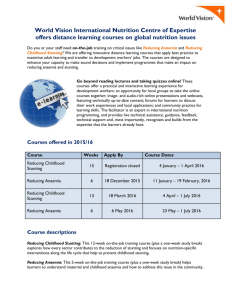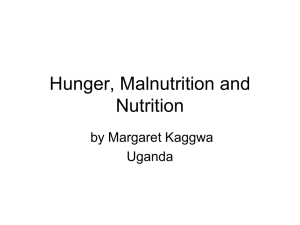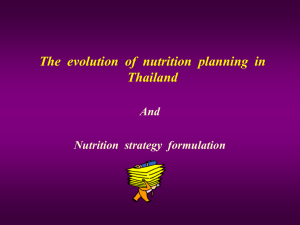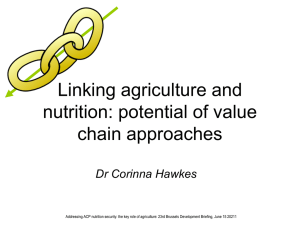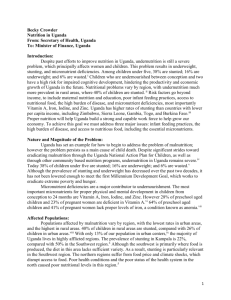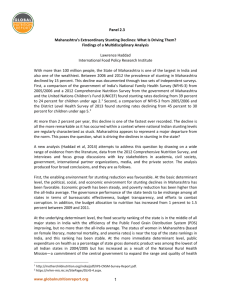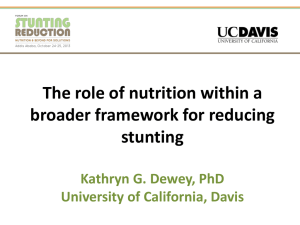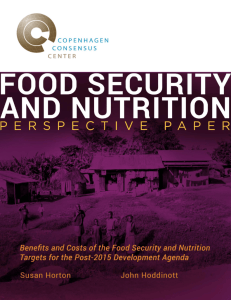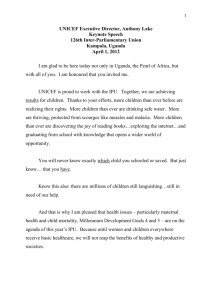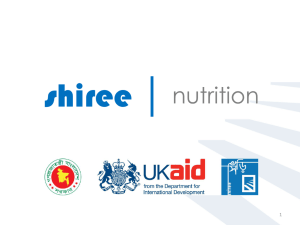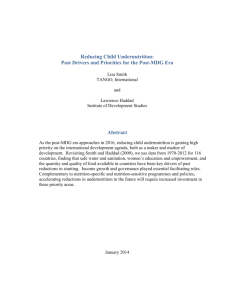THE UNAP - Alive and Thrive
advertisement
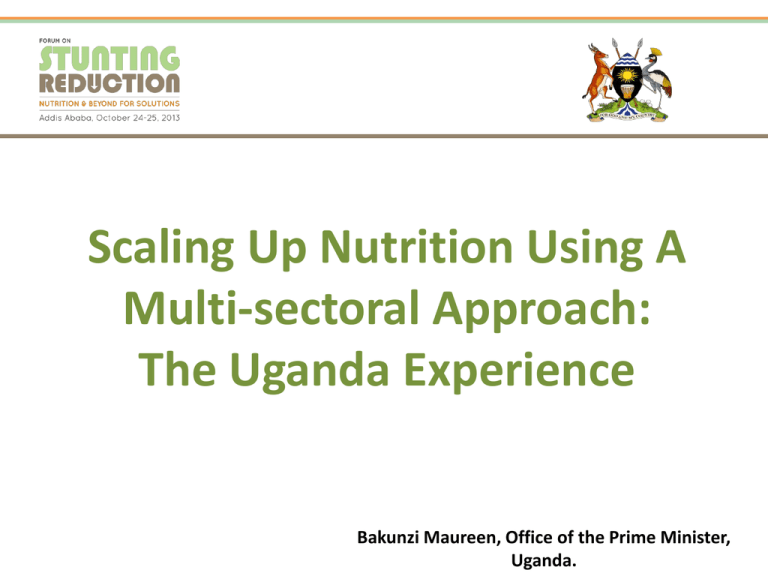
place your organization’s logo here Scaling Up Nutrition Using A Multi-sectoral Approach: The Uganda Experience Bakunzi Maureen, Office of the Prime Minister, Place your name, title, project | Organization here Uganda. Structure of presentation • • • • • Status of nutrition in Uganda- some statistics The UNAP- a multi sectoral approach The UNAP coordination framework in Uganda Some of the lessons learnt Some recommendations Stunting: Percent of children under age 5 Note: Vulnerability varies from region to region Distribution of stunting, wasting and underweight in under-fives DHS 2011 % Stunting 33.4%; Underweight 16%; & Wasting 5% TARGETS • Iron deficiency anemia in under-5s, Baseline (2006) 73% Target(2016) 50% • Iron deficiency anemia in women age 15-49, Baseline (2006)49% Target (2016)30% • Stunting in U5 to 27%, Under weight to 10% and excl. BF up to 6months – 75% all by 2016 THE UNAP • Uganda’s Strategy for SUN, the 1000 days as a window of opportunity • Goal: to reduce malnutrition levels among women of reproductive age, infants and young children from 2011 through 2016 and beyond. • Focus: National efforts & public resources to improve infant & maternal nutrition outcomes through scale – up of proven interventions THE UNAP • Target: Young children and women of reproductive age • Prescribes a multi-sectoral approach • Launched by the President of Uganda in November 2011 • Coordinated by the Office of the Prime Minister UNAP : strategic objectives 1. Improve access to and utilization of maternal, infant and young child nutrition health related services 2. Enhance consumption of diverse diets 3. Protect households from the impact of shocks & other vulnerabilities that affect nutritional status 4. Strengthen the policy, legal, institutional framework & capacity to effectively plan, implement, monitor & evaluate nutrition programmes 5. Create awareness & maintain national interest & commitment to improve & support for nutrition • Each Objective has corresponding Strategies Coordination Framework for the UNAP Key Lessons a) Need political commitment and ownership b) Multi-sectoral approach is not easy to implement c) Advocacy is imperative- government, partners, communities- a case for nutrition d) Building and strengthening linkages between key sectors/ and Agencies in both the public and private arenas e) Strengthen coordination, and collaboration to facilitate adequate nutrition advocacy, effective programming, and M&E Lessons Cont’d f) Must implement and scale up proven high-impact interventions g) Ensure production of and access to nutritious food, nutrition care within the household h) Promote public health, and livelihood support i) Nutrition sensitive policies and programmes Some recommendations 1. Enabling policy framework 2. Effective partnerships, common results framework 3. Resources to implement the necessary interventions/ programmes effectively and coordinate the implementation at all levels; tracking 4. Capacity Building- financial, human, technical- for effective nutrition governance 5. Information generation, utilisation and management, surveillance+ evidence Recommendations cont’d 5. 6. 7. 9. 10. Awareness and prioritisation at both sector and district level for proper planning and budgeting for nutrition actions. Community approach Evidence and prioritisation based on vulnerability Both N/D and N/S approaches- mix Sharing of best practices, harmonisation Mutual accountability place your organization’s logo here Thank you! Place your name, title, project | Organization here


